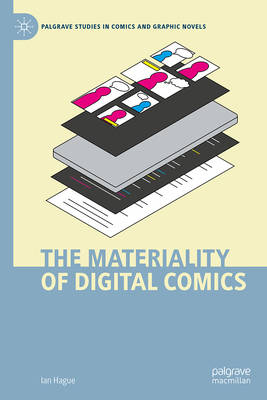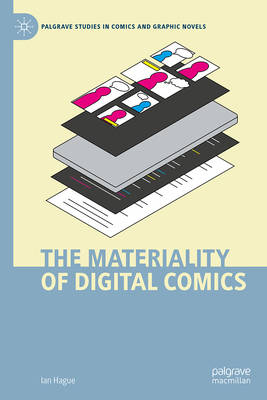
- Afhalen na 1 uur in een winkel met voorraad
- Gratis thuislevering in België vanaf € 30
- Ruim aanbod met 7 miljoen producten
- Afhalen na 1 uur in een winkel met voorraad
- Gratis thuislevering in België vanaf € 30
- Ruim aanbod met 7 miljoen producten
Zoeken
Omschrijving
The Materiality of Digital Comics asks how we can speak meaningfully about digital comics, and how we can do so in a way that remains meaningful as time passes and technology changes. In Part I, the book proposes a model for the study of digital comics that is founded on a material understanding of the form. Across three chapters, the book explores what digital comics are, in physical terms, and how we might structure our understanding of digital comics using six key terms: identifier, file type, software, firmware, hardware, and producers/readers. Each of these elements is explored individually before the relationships between them are discussed. The second part of the book develops this framework across three key areas: economics, histories and geographies. Chapter 5 explores the sales of digital comics and highlights a variety of costs and risks in digital comics that do not apply straightforwardly to print comics. Chapter 6 considers questions of histories as they pertain to digital comics, framing the discussion around four stages in the "life cycle" of a digital comic: creation, maintenance, movement and destruction. Chapter 7 addresses geographies through four topics: localities, nationalities, languages and law. Central to this chapter is the argument that digital comics are physically located things. The book concludes with a discussion of how the model presented here, and the concerns it raises, might be used actively for further scholarship, as well as an outline of other key areas that might be explored through a material analysis of digital comics in future.
Specificaties
Betrokkenen
- Auteur(s):
- Uitgeverij:
Inhoud
- Aantal bladzijden:
- 208
- Taal:
- Engels
- Reeks:
Eigenschappen
- Productcode (EAN):
- 9783032049537
- Verschijningsdatum:
- 13/01/2026
- Uitvoering:
- Hardcover
- Formaat:
- Genaaid
- Afmetingen:
- 155 mm x 235 mm

Alleen bij Standaard Boekhandel
+ 427 punten op je klantenkaart van Standaard Boekhandel
Beoordelingen
We publiceren alleen reviews die voldoen aan de voorwaarden voor reviews. Bekijk onze voorwaarden voor reviews.








